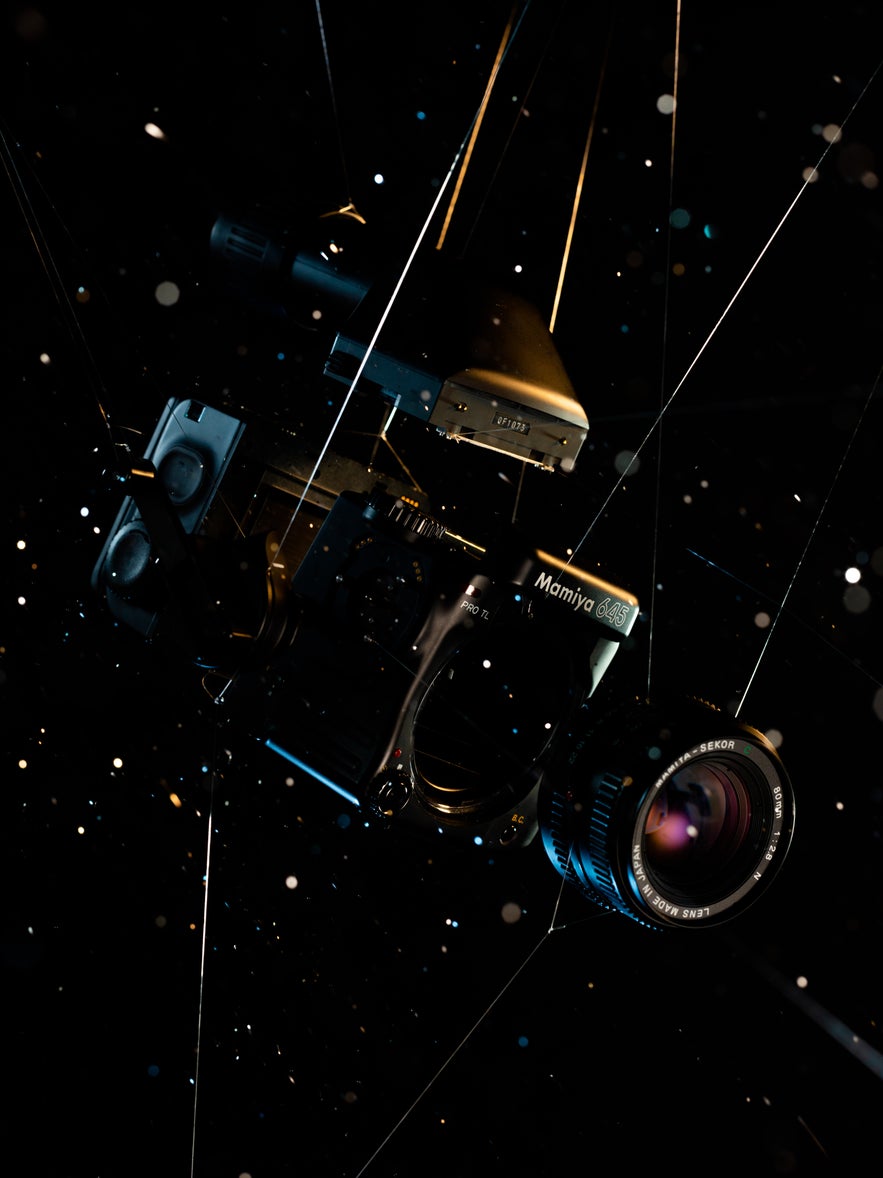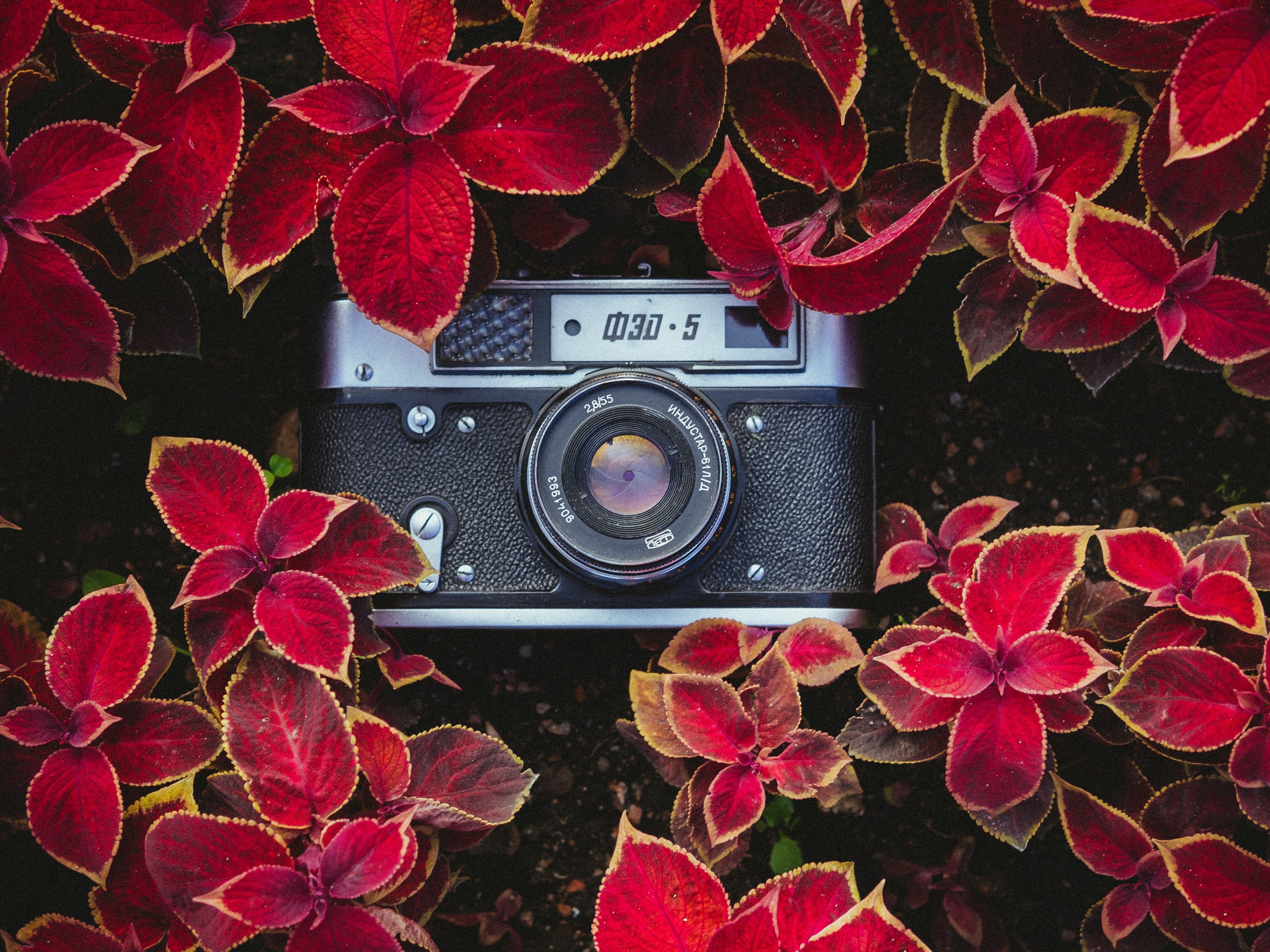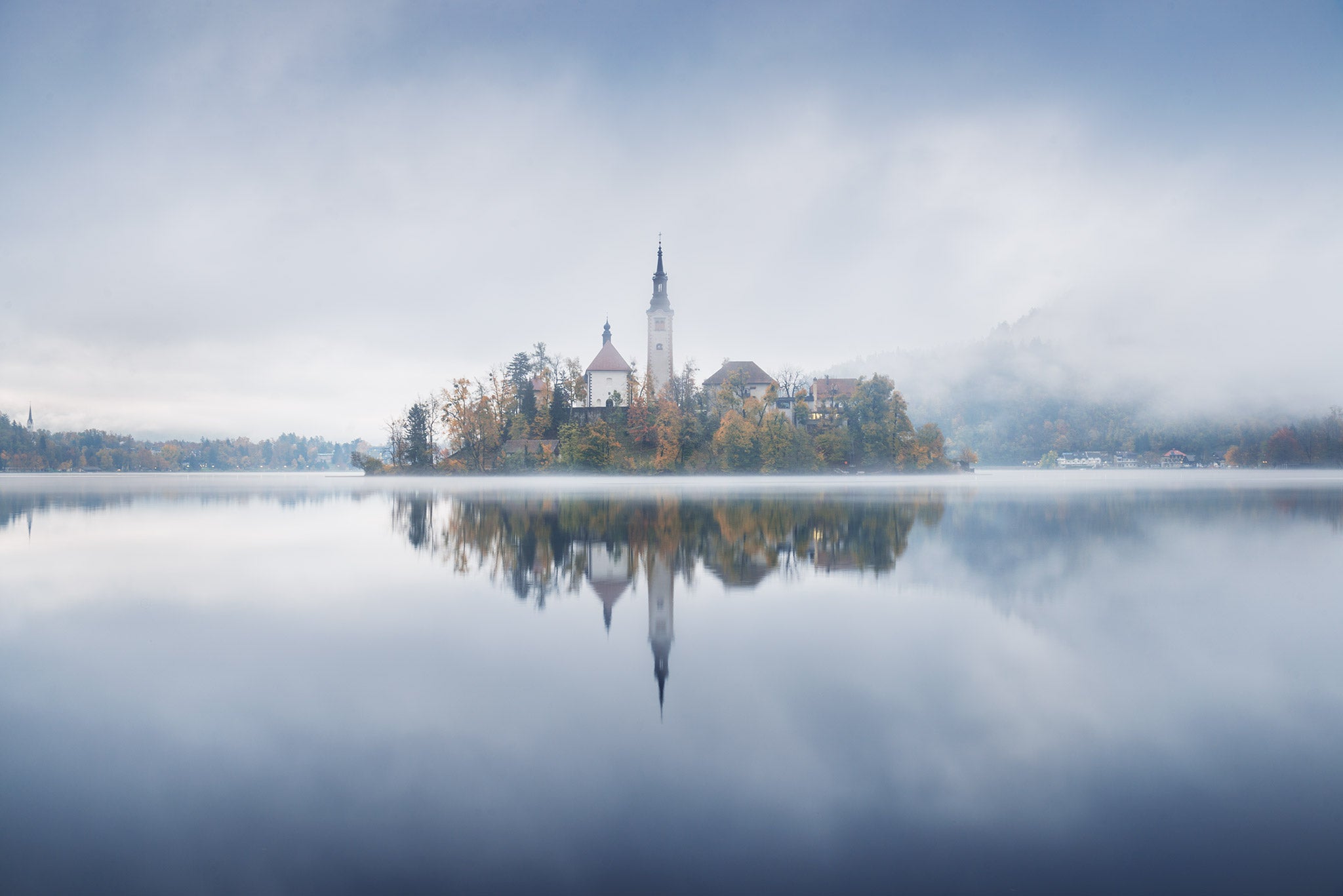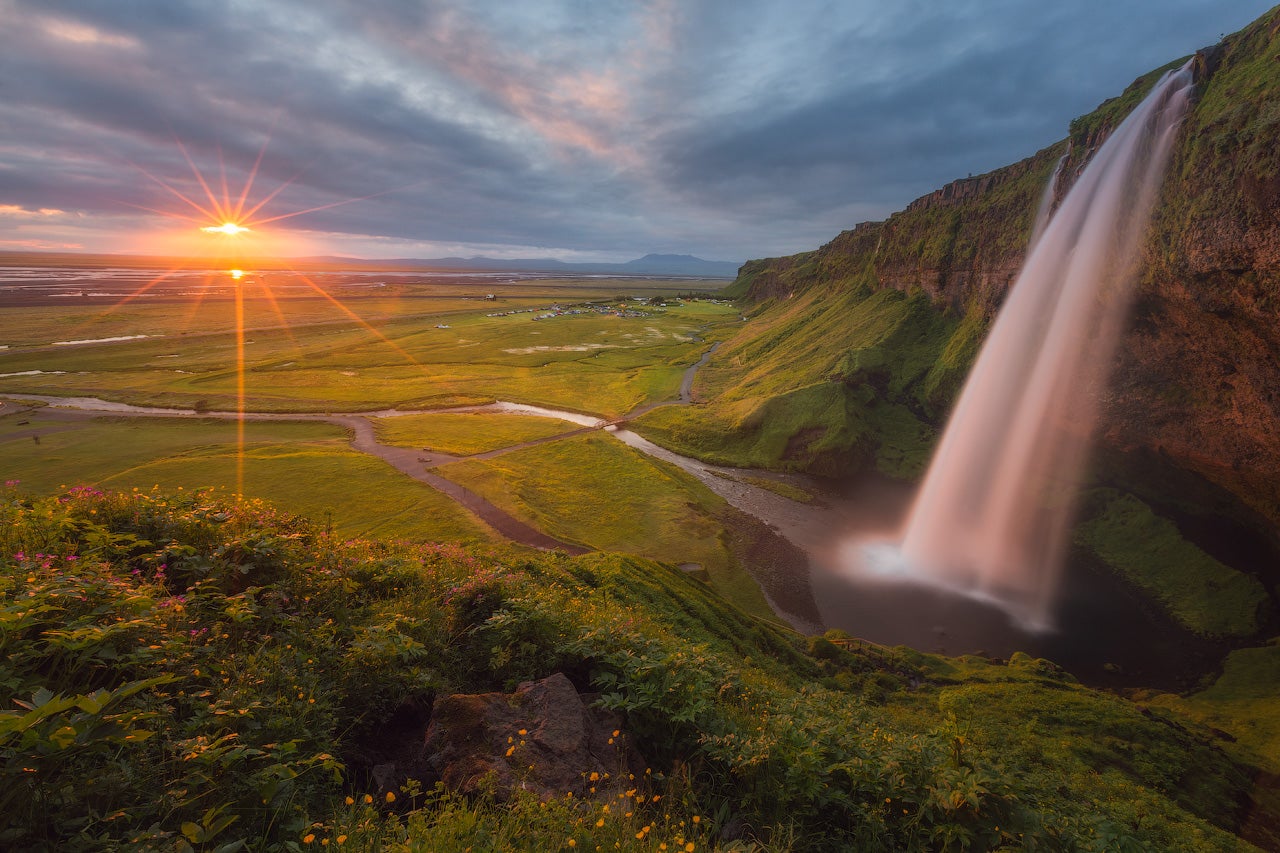
Medium format photography. It’s a notion that most photographers will encounter at some point during their journey, perhaps in advertising, while perusing fine art, browsing a camera catalogue or shopping in a camera store.
- Explore these Camera & Gear Reviews
- Learn all about Film vs Digital Cameras for Landscape Photography
- Discover 15 Types of Photography to Challenge Your Creativity
It’s been around for a long time and it remains relevant even today, so it’s important that you understand what it is and whether it can be incorporated into your own work. In this article, we’ll examine some of the most commonly asked questions about medium format camera systems. Read on to find out all about what medium format cameras are, how they may be utilised and what you should consider before buying a medium format camera.
What is Medium Format in Photography?
Before we start exploring what medium format cameras are, it’s a good idea to brush up on the history of photography. Back in the days of film, the image frames of cameras were divided into three distinct types: small format, medium format and large format. Each of these accepted different sizes of film. The typical standard frame size of a small format analog camera is 24 x 36mm, which is equivalent to a single frame of 35mm film.
 Medium format covers both analog and digital photography. Photo by: 'Adrian F, Unsplash'.
Medium format covers both analog and digital photography. Photo by: 'Adrian F, Unsplash'.
Oftentimes, when we talk about digital cameras, we refer to the terms ‘full-frame’ or ‘APS-C (cropped) sensor’. The sensor sizes of these cameras are similar to the size of a 35mm frame of film. As such, the digital cameras that are commonly used by many photographers today are categorised as small format. In comparison, medium format film cameras can accept film that is bigger than small format and smaller than 100 × 130mm, the latter of which is considered to be the size of large format film.
Medium format photography entered the digital realm back in 1991, with the introduction of a device that replaced the film holder on the back of an analog camera. This device was aptly named a ‘digital camera back’ as it contained an electronic image sensor, which allowed digital pictures to be taken instead of film. These days, the sensor size of digital medium format cameras can be between two to six times larger than those contained within full-frame and APS-C digital cameras, though they still remain smaller than the sensors of large format cameras.
 Mamiya 645. Photo by: 'Caleb Minear, Unsplash'.
Mamiya 645. Photo by: 'Caleb Minear, Unsplash'.
Many medium format cameras are what we call ‘system cameras’ – the type that allow for interchangeable lenses as well as other accessories. These include viewfinders, digital camera backs and wind-up mechanisms.
What Are Medium Format Cameras Good For?
Both film and digital medium format cameras are still used for many applications. These include:
-
Fashion, commercial and editorial shoots
-
Fine art photography
The most common reason that photographers choose to invest in a medium format camera system is for the purpose of producing very large photographs at a higher resolution than would be able to be achieved with a 35mm film or digital camera. Considering the applications that we’ve mentioned above, these are all genres of photography in which images may need to be enlarged or magnified for publication. Think of billboards, magazine covers and floor to ceiling prints in an art gallery.
 Billboards need high resolution images, which are commonly taken with medium format cameras. Photo by: 'Who Du Nelson, Unsplash'.
Billboards need high resolution images, which are commonly taken with medium format cameras. Photo by: 'Who Du Nelson, Unsplash'.
Another advantage of medium format cameras is cropping flexibility. The larger film size or megapixel count means that you’ll be able to provide your clients with a variety of options when it comes to cropping a photograph to suit their needs, whilst still retaining a high level of detail and resolution in your images. This is in contrast to the graininess and blur that often accompanies enlarged images from small format cameras.
 Bellows with a medium format camera. Photo by: 'Markus Winkler, Unsplash'.
Bellows with a medium format camera. Photo by: 'Markus Winkler, Unsplash'.
Creatively, medium format systems will give you more room to experiment with depth of field. Some cameras have what we call ‘bellows’ – an expandable part of the camera that resembles an accordion – which allows for tilt-shift lens capabilities. This means that you can achieve an extremely large depth of field, which is especially useful in landscape photography when you want everything to be in focus from the foreground all the way into the horizon.
 Medium format cameras are great for editorial images. Photo by: 'Charisse Kenion, Unsplash'.
Medium format cameras are great for editorial images. Photo by: 'Charisse Kenion, Unsplash'.
Last but not least, medium format cameras are known for their great colour reproduction, which is why they’re so coveted in the world of fashion and commercial photography.
Is Medium Format Better Than 35mm?
While there are many advantages to using a medium format over 35mm, APS-C or full-frame cameras, there are also some disadvantages that you’ll need to consider.
 There are so many cameras on the market these days. Photo by: 'Christian Mackie, Unsplash'.
There are so many cameras on the market these days. Photo by: 'Christian Mackie, Unsplash'.
First of all, you’ll be paying for what you get. Along with exceptional image quality comes a hefty price tag. While older medium format film cameras may be the more affordable option, the film remains expensive in terms of cost related to each exposure. Furthermore, it is much harder to find at local camera stores than 35mm film. You may need to source it at specialty stores or even buy film online. Similarly, digital medium format systems can cost upwards of $10,000 USD for the camera body alone, which in some cases may add up to the same cost as purchasing a full-frame camera with a decent lens and other accessories!
 Fuji GX680. Photo by: 'Viaissimo, Wikimedia Commons, CC BY-SA 3.0'.
Fuji GX680. Photo by: 'Viaissimo, Wikimedia Commons, CC BY-SA 3.0'.
Secondly, medium format cameras are significantly larger than their small format counterparts. Although they produce incredible images with excellent colour reproduction, they are not the best choice for photography in certain situations. The heavy weight and bulky designs of medium format cameras make them difficult to use for street photography, action scenarios and photojournalism. While they play a fascinating role in professional landscape photography, they are also cumbersome if you tend to work alone without a team to help you carry around all of your gear.
 Your medium format system may not fit in a small camera bag. Photo by: 'Michael Soledad, Unsplash'.
Your medium format system may not fit in a small camera bag. Photo by: 'Michael Soledad, Unsplash'.
Of course, the argument also remains that no matter how good the camera is, its performance will be limited by the creativity and level of experience of the photographer behind it.
Do I Need a Medium Format Camera?
This depends entirely on what type of photography you want to pursue. If you intend to work in commercial photography, then be aware that some advertising agencies will require you to have a medium format camera system before you can even apply for one of the more lucrative jobs. This is because there is often a lot of money on the line and they’re looking for the best quality that they can get. While you may be a whiz at photography with your small format camera, the equipment itself may not live up to the standard requirements of your potential clients.
 Do you really need a medium format camera for your landscape photography? Photo by: 'William Bout, Unsplash'.
Do you really need a medium format camera for your landscape photography? Photo by: 'William Bout, Unsplash'.
Another thing to consider is whether you’ll be willing to lug your equipment around with you wherever you go, as medium format cameras tend to be heavy. To maintain image sharpness and quality, as well as to make use of lens controls such as swinging, tilting and shifting, you may very well need to mount your camera onto a tripod. This will add further weight to your gear. While it may be easy to use a medium format camera system in a studio or on set where objects are not moving, it may prove to be a bit more difficult if you’ll be hiking for several days in nature in search of the perfect composition.
 Hasselblad 500C. Photo by: 'Donald Giannatti, Unsplash'.
Hasselblad 500C. Photo by: 'Donald Giannatti, Unsplash'.
Needless to say, digital medium format cameras can work out to be a very expensive venture. If you’re serious about investing in one of these systems, then you’ll need to do your research and be absolutely sure that you’ll be getting your money’s worth. As we’ve already mentioned, medium format sensors are much larger than sensors found in small format cameras. This means that they’re more expensive to produce so of course, they’ll cost more to purchase at sale price after mark-ups have been applied. Add the fact that there is very limited demand for this type of camera system these days and it will soon become apparent that digital medium format cameras fall into the more high-end market, just out of reach for the majority of hobbyists and amateur photographers – unless you have the budget and wallet to match.
 Yashica-24. Photo by: 'Thomas Thompson, Unsplash'.
Yashica-24. Photo by: 'Thomas Thompson, Unsplash'.
If you’re not quite sure whether a medium format camera will be a good fit for you, then it’s a good idea to rent one from a camera shop to test for a few days. You can even bring one along as a second camera on your next shoot so that you can compare the images to those that you take with your normal set-up.
- See also: Where to Find Camera Manuals Online
The Best Medium Format Cameras for Beginners
There are many brands and models of medium format cameras on the market these days, making it difficult to know where to begin if you’re looking to make your foray into this fascinating type of photography. Here is a list of our favourite medium format cameras to help you get started. Don’t forget to do your own research before committing to a purchase!
Fujifilm GFX 50S
This mirrorless medium format camera stands out for more reasons than one. With a whopping resolution of 51.4 megapixels, advanced colour reproduction, a 43.8 x 32.9mm CMOS sensor and fantastic line-up of lenses to match, you can be sure to achieve outstanding image quality each and every time.
The camera body itself is dust and weather resistant, as well as freeze-proof to -10°C, making it a great choice for landscape photographers seeking to venture out into harsher conditions. The large rear touchscreen LCD tilts in three directions, so you can frame your shots easily, even at tricky angles.
Despite its sensor size, this camera weighs in at only 740g, making it quite lightweight in the realm of medium format photography. An optional tilting adapter enables vertical tilt and horizontal rotation, so you can shoot easily from waist level if needed.
RRP: $5499.95
Pentax 645Z
This award-winning camera is a favourite amongst medium format photographers and for very good reason. The image quality is outstanding, with a resolution of 51.4 megapixels on a 43.8 x 32.8mm CMOS sensor. In addition, a full line-up of lenses covers everything from wide angle to macro photography, ensuring fantastic image quality no matter what you’re shooting.
This camera boasts a large buffer memory size, which means faster response times when in continuous shooting mode. Meanwhile, the tiltable LCD monitor means that you’ll be able to shoot at any angle or height, whether from the waist or close to the ground.
Weighing in at 1.47kg (body only), this camera is quite hefty so it’s more suited to shooting in a studio than out in-field.
RRP: $6996.95
- See also: How to Use the On-Camera Flash
Hasselblad X1D II 50c
This compact medium format camera packs quite a punch. It’s as small or smaller than a full frame camera, while managing to contain a 50 megapixel CMOS sensor!
This camera features a huge dynamic range of 14 stops, 3.69MD OLED electronic viewfinder, excellent rear display and an incredible electronic platform for faster startup time as well as 2.7 frames per second continuous shooting rate.
The Hasselblad is one of the lightest medium format options on the market today, weighing in at only 650g. This makes it a great option for photographers who are constantly on the go and don’t need heavy equipment holding them down.
RRP: $5750.00
- See also: The Best Camera Bags for 2020
More Expensive Options
If none of the above catch your fancy and you have the money to splash around, then check out the Leica S3 ($18,995) and Phase One XF IQ4 ($56,990).
Conclusion
Harking back to the days of film photography, medium format cameras have certainly managed to retain a coveted and well-deserved place in modern day photography. These camera systems are a favourite amongst photographers working in a number of different genres, owing to their ability to produce larger images with cropping flexibility, incredible depth of field, great colour reproduction and all-round excellent image quality.
 Mamiya RB67. Photo by: 'Thomas Thompson, Unsplash'.
Mamiya RB67. Photo by: 'Thomas Thompson, Unsplash'.
While medium format cameras may be expensive to invest in, the returns are worthwhile for professional photographers who have the ability and patience to work with this type of gear. If you’ve exhausted the creative boundaries of your small format camera and you have the budget to upgrade to a medium format system, then this type of camera might be the right fit for you.
About the author: Serena Dzenis is a landscape photographer based in Iceland. You can find more of her work on her website or by following her on Facebook and Instagram.
Have you ever considered purchasing a medium format camera? Perhaps you've already tried using one? Share your thoughts by leaving a comment below!












